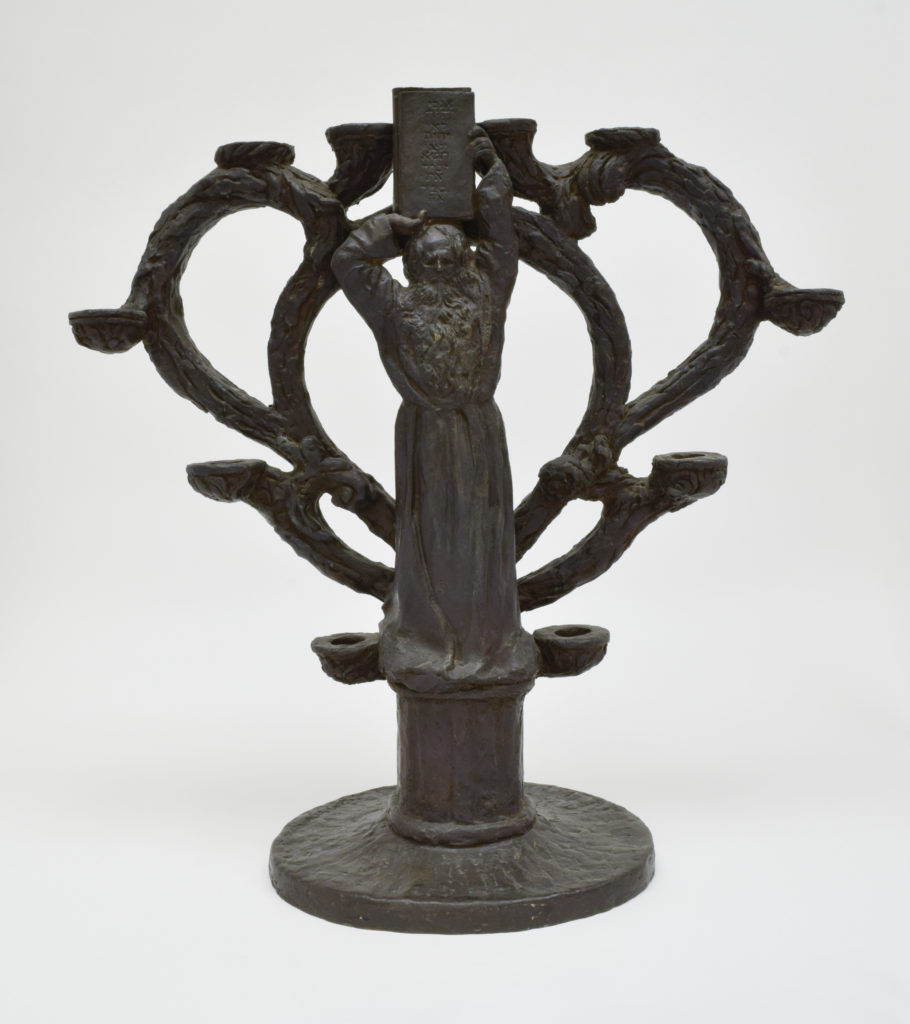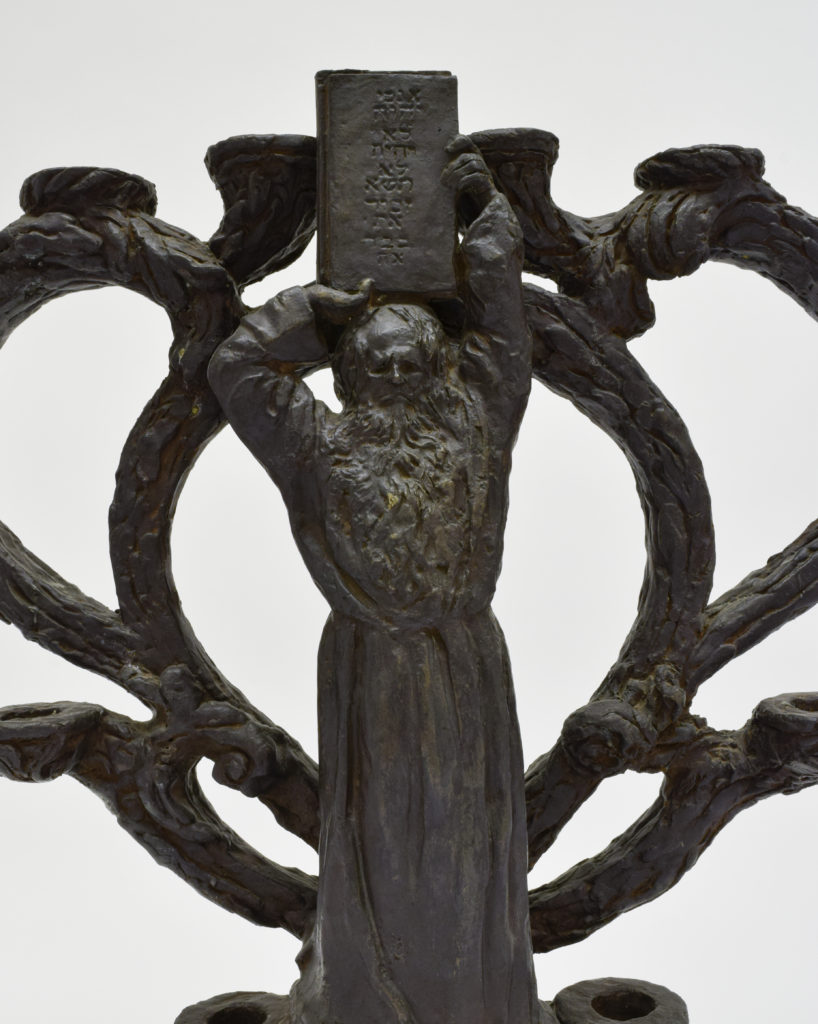Moses Candelabrum
Benno Elkan (Dortmund, Germany 1877—London, England 1960)
Bronze, h. 18 x w. 17 in.
London, England 1955
Cincinnati Skirball Museum, given in honor of A. Edgar and Alice B. Aub by their children, Mary Alice Borg, A. Edgar Aub, Jr., and Claire A. Bedolis, 1981, 27.128.
Recently, a set of letters surfaced during a rearranging of our storage area that have brought to light the back story of an important candelabrum in the Skirball’s collection. Given to the museum in 1981, the candelabrum held pride of place for years in the North Avondale and then Hyde Park, Cincinnati homes of the couple who commissioned it, A. Edgar and Alice Aub.
The letters tell a story of a couple who traveled widely and visited England in the mid-1950s. The letters, written by renowned German Jewish sculptor Benno Elkan, refer to the couple having seen his work at Westminster Abbey, and having visited with the artist in his home. The work they saw at Westminster Abbey was a pair of great (6 feet high by 7 feet wide) bronze candelabra depicting scenes from the Old and New Testaments. Donated by Arthur Hamilton Lee in 1939 and 1942, the Old Testament candelabrum was dedicated on March 24, 1940. It contains 32 Old Testament figures and required ten years to complete. Apparently, the Aubs were taken with the Old Testament candelabrum, and particularly with the central figure, Moses, holding aloft the Ten Commandments.
The artist’s letters from August and September of 1955 chronicle what must have been a robust exchange (we only have Elkan’s letters) regarding the Aubs’ commissioning of a candelabrum featuring the figure of Moses. The artist writes delightedly on August 26, 1955 that “I most surprisingly have discovered the original mould for the Moses figure, from which the one in the Abbey has been made!” A few days later (the Aubs must still have been in London), Elkan responds to an apparent request from his patrons to “reduce the size of the Moses candlestick” from the original ten holders to six. In a letter dated September 7, 1955, he sends several sketches and detailed explanations for alterations to his original concept, concluding with these words: “But in the depth of my heart I am still—after dozens of more sketch attempts—most satisfied and pleased with the old one I once made and which in my newly invoked memory seems to me the best.” In the same letter, the artist asks “from which angle in daytime (and at night) the light falls onto the Moses. It is very important for the effects of its mightiness and delicacy.” He asks for information about the natural and lamp light for the piece and promises to offer instruction on how best to light the work.
The Aubs must have been convinced that Elkan’s original design with 10 candleholders was indeed the best. In a letter of May 10, 1956, Elkan writes that “you will be pleased to hear that the American ship [?] sailed to Baltimore, as it was said to me to be the next port to Cincinnati carrying the valuable box with our Moses candlestick.” In the same letter he reports that he has sent 10 little cups for the candleholders to prevent wax running over.
Such insight into the background of a commission is rare and exciting, and even provides a window to history. References in some of the letters to another project by Elkan indicate that the Aubs witnessed the artist’s progress on the massive Menorah that stands in front of the Israeli Knesset, a gift from the United Kingdom on April 15, 1956 in honor of the eighth anniversary of Israeli independence.


